The Treasures of Xinjiang: Exhibition of Precious Cultural Relics from Xinjiang Kicked off at Hunan Museum
On January 21st, the opening ceremony of "The Treasures of Xinjiang: Exhibition of Precious Cultural Relics from Xinjiang " was held at the Hunan Museum. Leaders and guests from the Department of Culture and Tourism of Hunan Province, the Xinjiang Uygur Autonomous Region Museum, the Turpan Municipal Government, the Turpan Municipal Bureau of Cultural Heritage, the Turpan Institute of Cultural Heritage and Museum, and the Women's Federation of Hunan Province, as well as representatives from cultural and museum institutions within the province, attended the opening ceremony.
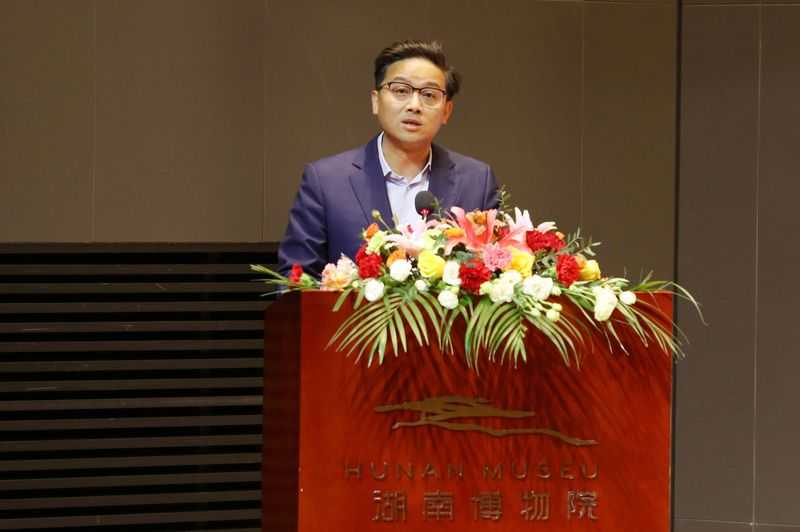

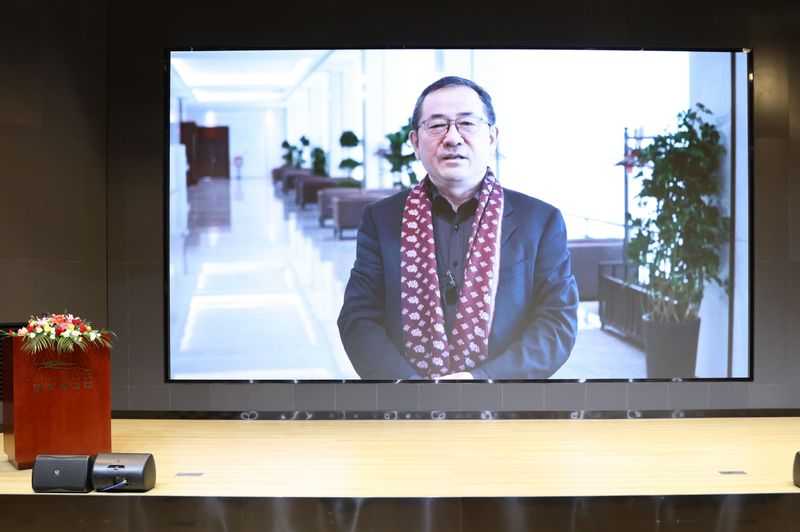
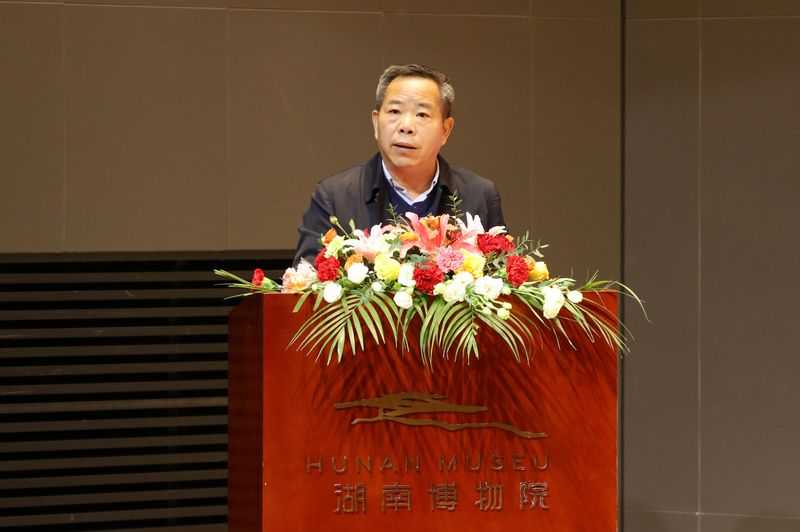
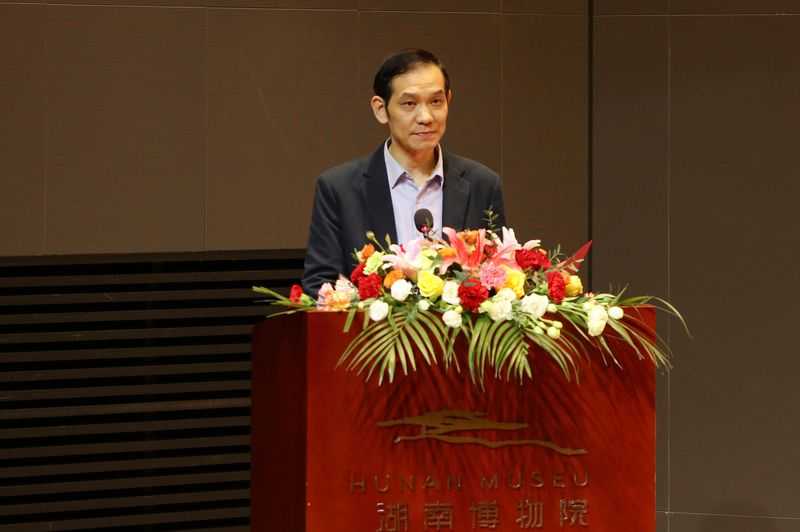
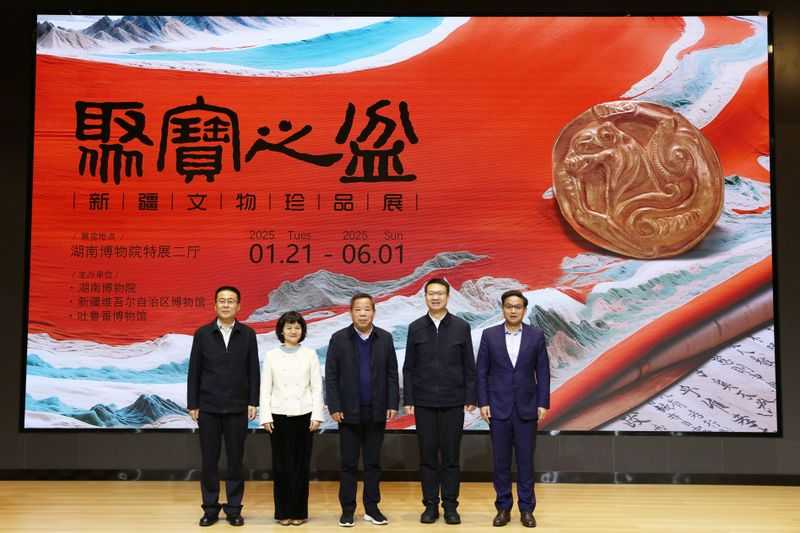
This original exhibition, which marks the start of 2025 for the Hunan Museum, has drawn significant attention from all sectors of society. It is the first large - scale exhibition of precious cultural relics from Xinjiang in Hunan. The exhibition is jointly organized by the Hunan Museum, the Xinjiang Uygur Autonomous Region Museum, and the Turpan Museum, and has received guidance and support from the Department of Culture and Tourism of Hunan Province and the Hunan Aid - Xinjiang Working Team. Through their collaborative efforts, 158 pieces (sets) of precious cultural relics have been carefully selected, covering various categories such as metalware, pottery, textiles, documents, calligraphy, and paintings. The exhibition is divided into three parts: "In That Distant Place", "The Camel Bells Ringing on the Ancient Silk Road", and "The Spring Breeze Has Crossed Yumen Pass", which vividly tell the historical and cultural stories of Xinjiang from aspects such as the changes in the natural environment and production methods, as well as the rich and diverse material and spiritual civilizations.
The Silk Road, carrying countless legendary stories, has profoundly influenced the historical, cultural development, and artistic creation in Xinjiang and even the entire northwestern region of China. Since Zhang Qian's first mission to the Western Regions in the Western Han Dynasty, and until the Tang Dynasty when it became an important passage for the convergence of Eastern and Western civilizations, Xinjiang has always been a crucial hub of the Silk Road. On this ancient commercial route, merchants and officials from all over the world shuttled back and forth, and diverse ideas and technologies converged here, jointly shaping the rich and colorful cultural heritage of this region. This exchange and integration of diverse cultures provide a valuable perspective for us to understand the history and art of Xinjiang today.
Xinjiang and Hunan also have a profound historical origin. During the late Qing Dynasty, Zuo Zongtang once praised Xinjiang as "a so - called vast desert that is actually a basin full of treasures." Liu Jintang, a native of Hunan, as a general of the Hunan Army and the commander - in - chief of Zuo Zongtang's Western Expedition, served as the first governor of Xinjiang at the young age of 40 when Xinjiang was established as a province in the 10th year of the Guangxu reign (1884). He made outstanding contributions to the construction and development of Xinjiang and jointly composed a glorious epic of developing and building Xinjiang with people of all ethnic groups in Xinjiang.
Interpretation
Part 1: In That Distant Place
Xinjiang is located in the hinterland of the Eurasian continent and on the northwestern border of China. As early as the pre - Qin period, Xinjiang was divided into two distinct regions by the Tianshan Mountains. To the north of the Tianshan Mountains is a grassy and water - abundant grassland nomadic area, while to the south, where the climate is relatively dry, is dominated by a settled farming culture. With the migration of ethnic groups and the continuous exchange of materials and technologies with the Central Plains region, Xinjiang embarked on a development path of cultural exchange and mutual learning.
Part 2: The Camel Bells Ringing on the Ancient Silk Road
Thanks to the opening of the Silk Road, silk fabrics from the Central Plains became popular among the upper - class society in Xinjiang, often woven with Chinese characters of auspicious sayings. At the same time, daily necessities such as glass ornaments and drinking utensils introduced from the West continuously updated people's lifestyles. The documents in various languages left behind by the ancient Xinjiang residents cover a wide range of contents. These precious written treasures, together with the complex funeral customs reflecting the concept of "treating death as life", record the social, economic, and cultural conditions of Xinjiang at that time from different perspectives. "Everywhere you look, the mountains blend into a harmonious whole, and a shared cultural ambience pervades the vast expanse." Clothing, food, documents, burial objects, etc., all carry the material and spiritual civilizations of Xinjiang in various important historical periods, especially during the Han and Tang dynasties, which concentratedly demonstrated its inclusive characteristics.
Part 3: The Spring Breeze Has Crossed Yumen Pass
As early as the pre - Qin period, Xinjiang maintained close contact with the Central Plains region. After the establishment of the Western Regions Protectorate in the Han Dynasty, Xinjiang officially became part of China's territory, and successive central governments have exercised jurisdiction over Xinjiang. The famous "Silk Road" connected ancient China with the world, making Xinjiang a place where multiple civilizations converged. In the magnificent long history, the people of Xinjiang have contributed to the formation and development of Chinese culture. It is no longer the desolate scene described by Wang Zhihuan in the poem "Why should the Qiang flute wail over the absence of spring scenery? The balmy spring breeze just can never reach the desolate Yumen Pass."By the Qing Dynasty, the stable political situation promoted the vigorous development of handicrafts and arts and crafts in Xinjiang, further promoting the continuous progress of the diverse and integrated Chinese culture.
Digital Display


This exhibition fully integrates the elements of "cultural relics + technology", using a variety of digital display methods such as semi - panoramic painting counter - projection, "radar interaction + cultural relic activation", and "AR co - shooting" to display and interpret cultural relics. This enables visitors to more intuitively and vividly experience the charm and historical value of cultural relics, achieving the dual purpose of dissemination and entertainment, and creating a three - dimensional exhibition space where audio - visual and interactive elements coexist.
Educational Activities
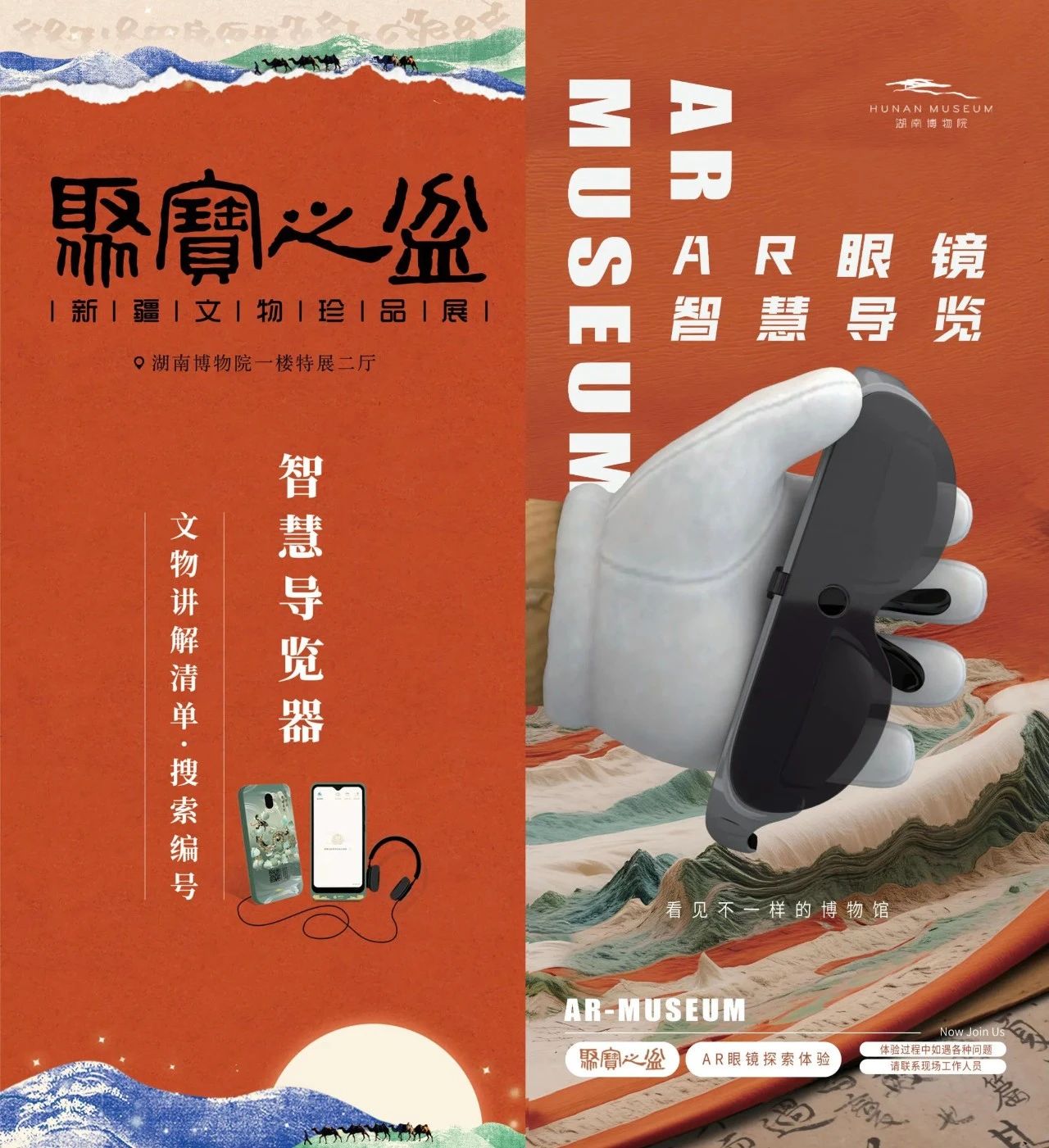
The Education Center of the Hunan Museum has made every effort to create a diverse exhibition - visiting experience. The intelligent guided tour is at your fingertips, providing in - depth analysis of the prosperity of the Silk Road and allowing you to appreciate the fascinating historical stories of Xinjiang. A rich variety of educational activities are also launched simultaneously, including educational courses, special guided tours, expert lectures, etc., enabling you to comprehensively understand the profound historical and cultural heritage of Xinjiang. Volunteer services are provided on time, vividly telling the past and present of cultural relics, allowing you to immerse yourself in this cultural feast and feel the charm of the exchange and integration between Xinjiang and Central Plains cultures.
Exploration


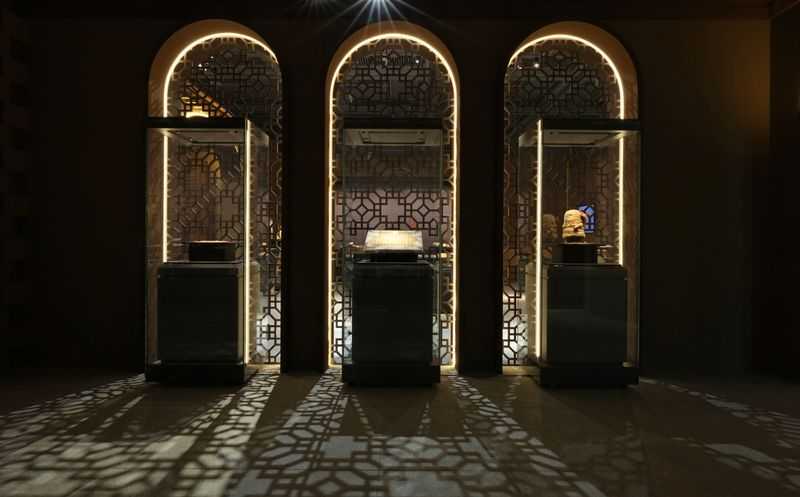
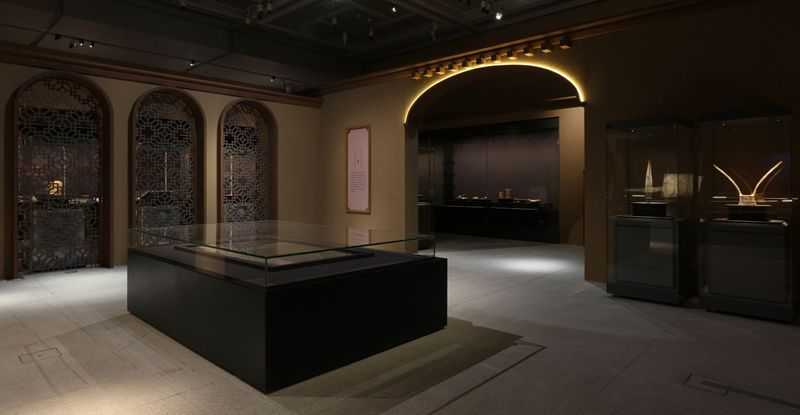







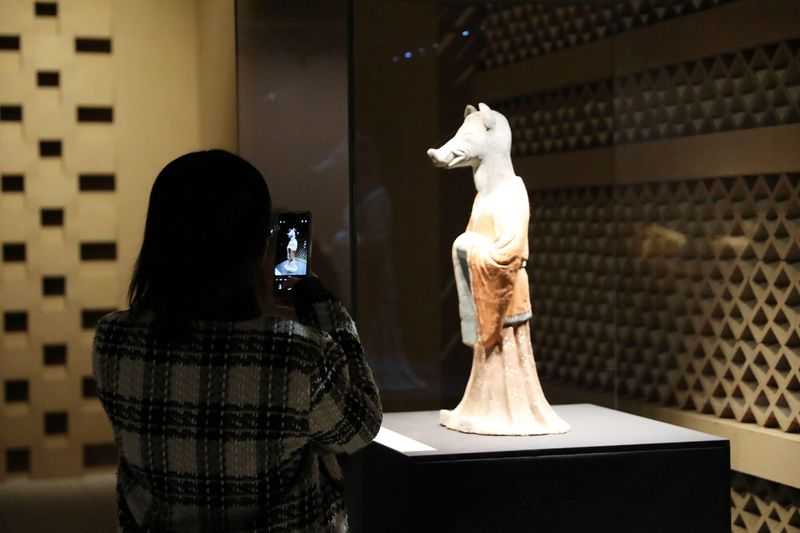
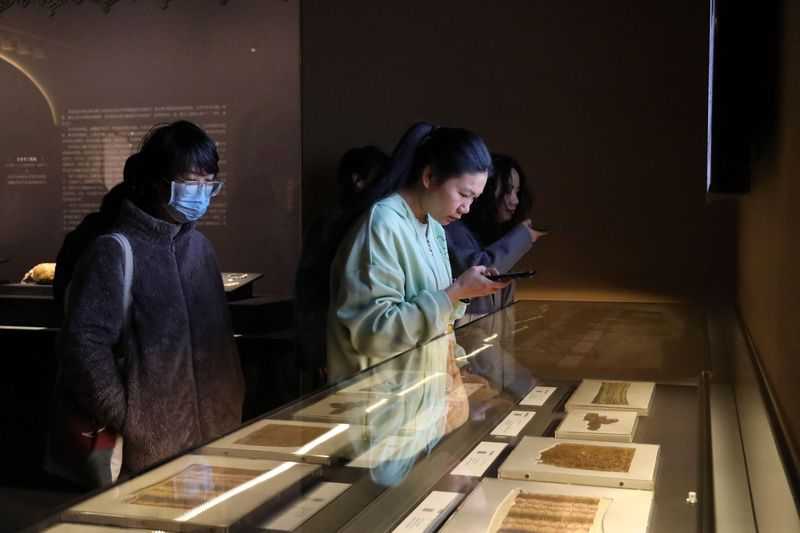

The exhibition is open to the public from January 21st, 2025, to June 1st, 2025, in the Second Special Exhibition Hall on the first floor of the Hunan Museum. Visitors can reserve tickets through the official WeChat public account and Alipay mini - program of the Hunan Museum.



